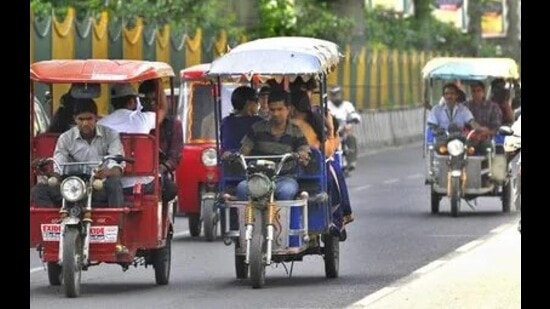As the popularity of electric scooters continues to grow, many consumers and businesses are exploring the possibility of shipping these eco-friendly vehicles. Whether you’re importing electric scooters for resale or purchasing one for personal use, understanding the shipping process is essential. This article provides insights into shipping electric scooters, covering key considerations, regulations, and best practices.
Overview of Electric Scooter Shipping
Shipping electric scooters involves several logistical considerations, including packaging, mode of transportation, customs regulations, and handling. Given their electrical components and battery systems, electric scooters are subject to specific regulations during transport to ensure safety and compliance with local laws.
1. Packaging for Safe Transport
Proper packaging is crucial for shipping electric scooters safely. High-quality packaging protects the scooter from damage during transit and helps prevent any issues related to the electrical components. Key packaging considerations include:
- Secure Crating: Electric scooters should be secured in sturdy crates or boxes that can withstand the rigors of transportation. This prevents movement and minimizes the risk of damage.
- Protective Materials: Use foam padding, bubble wrap, or other protective materials to cover sensitive parts, especially the battery and display screens. This cushioning helps absorb shocks during transport.
- Clear Labeling: Clearly label the package with handling instructions and information about the contents, including that it contains batteries, if applicable.
Manufacturers like QSD prioritize packaging when shipping their electric scooters. Their attention to detail ensures that scooters arrive at their destination without damage, maintaining product integrity and quality.
2. Choosing the Right Shipping Method
Selecting an appropriate shipping method is critical to ensuring that electric scooters are delivered safely and efficiently. Common options include:
- Air Freight: This is the fastest shipping method and is ideal for urgent deliveries. However, air freight can be significantly more expensive, especially for larger shipments.
- Sea Freight: For bulk shipments, sea freight is often the most economical option. While slower than air freight, it is suitable for transporting multiple electric scooters at once, making it a cost-effective choice for businesses.
- Ground Transportation: For domestic shipments, trucks are the primary mode of transport. Ground shipping allows for flexibility in scheduling and delivery to various locations.
Each shipping method has its pros and cons, and the choice will depend on factors like budget, urgency, and destination.
3. Regulatory Considerations
Shipping electric scooters involves navigating various regulations, particularly concerning the batteries used in these vehicles. Many countries have specific regulations regarding the transport of lithium-ion batteries, which are commonly used in electric scooters. Key regulatory points to consider include:
- Dangerous Goods Regulations: Lithium-ion batteries are classified as dangerous goods in many jurisdictions. This means they must be packaged and labeled according to specific guidelines to ensure safe transport.
- Customs Regulations: When importing electric scooters, it’s essential to comply with the customs regulations of the destination country. This includes understanding any tariffs, taxes, and documentation requirements.
- Local Regulations: Some regions may have additional restrictions or requirements for electric scooters, including those related to emissions, safety, and battery disposal.
Consulting with a logistics provider or customs broker familiar with shipping electric scooters can help ensure compliance with all applicable regulations.
4. Handling and Delivery
Once the electric scooters are packaged and shipped, proper handling during transit is essential to prevent damage. Key handling practices include:
- Careful Loading and Unloading: Use forklifts or cranes to load and unload scooters, particularly for larger shipments. This prevents physical damage and ensures safety during handling.
- Secure Transport: Ensure that the scooters are secured within the shipping vehicle to prevent movement. This can involve using straps, chains, or other restraints.
- Tracking and Communication: Providing tracking information to the recipient can help manage expectations and allow for timely delivery updates.
QSD’s logistics team is experienced in handling electric scooters, ensuring that each vehicle is treated with care throughout the shipping process.
5. After-Delivery Support
Once the electric scooters arrive at their destination, offering after-delivery support is crucial for customer satisfaction. This includes:
- Inspection and Assembly: Providing guidance on inspecting the scooter for damage upon delivery and assistance with assembly, if needed.
- User Manuals and Maintenance Information: Supplying comprehensive user manuals and maintenance tips helps customers get the most out of their electric scooters.
- Warranty and Service Information: Clearly outlining warranty terms and available service options reinforces customer trust and satisfaction.
Conclusion
Shipping electric scooters is a feasible process that involves careful planning, proper packaging, and compliance with regulations. Whether you are a business importing scooters for resale or an individual purchasing one for personal use, understanding these aspects is crucial to a successful shipping experience.
Partnering with reliable manufacturers like QSD can streamline the process. With a focus on quality, safety, and customer support, QSD ensures that their electric scooters are shipped efficiently and arrive in excellent condition.
For more information on QSD’s electric scooters and how they can assist you with shipping and logistics, visit www.qsd-ev.com.
Post time: Sep-25-2024

